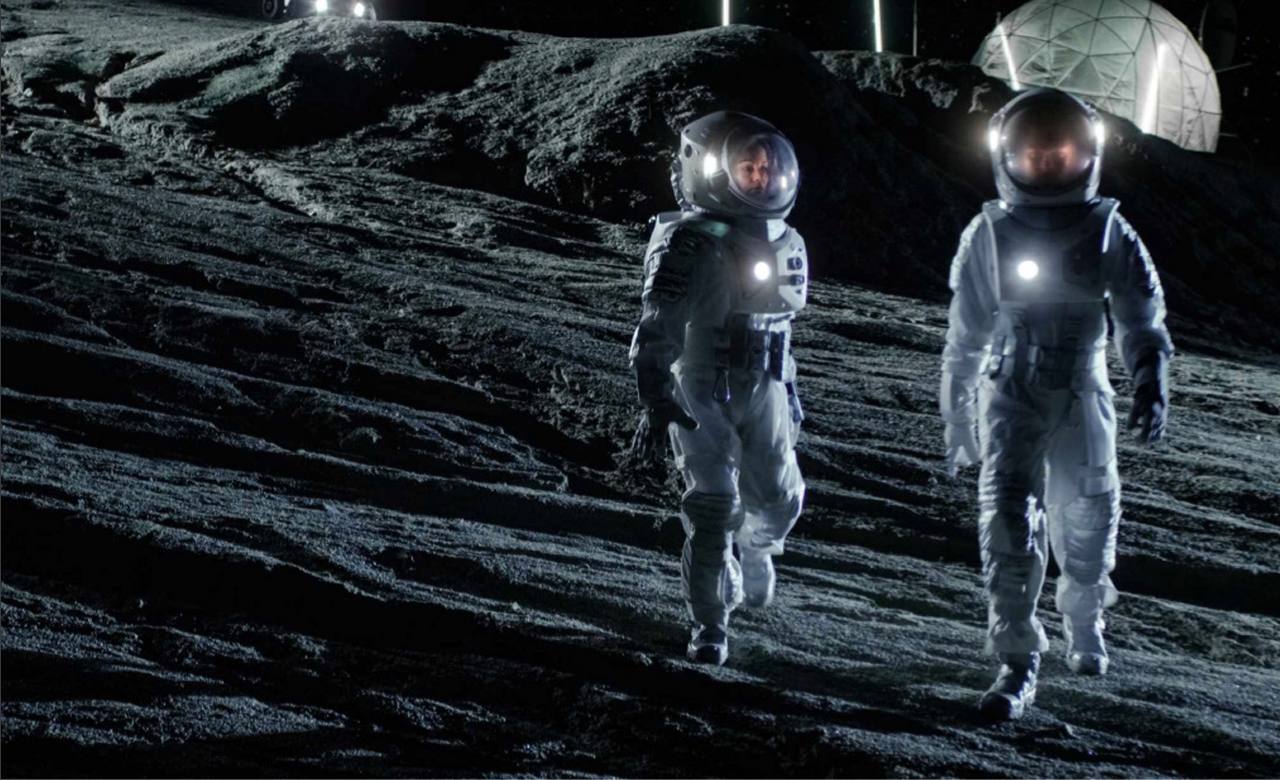Moon Race in 21st CE-Why & How?-Dangers and Opportunity
We all know that between 1969 and 1972, NASA landed 12 astronauts on the Moon. Starting with Neil Armstrong’s famous first step and brought for us, the Moon rocks so we could learn about our neighbor’s history and origins. To achieve all this the total cost of the Apollo program would amount to $280 bn, in today’s value (More than the net worth of Elon Musk). At that time, the space race was a competition with USSR that fueled these whopping cost experiments. But after all these years another space race is about to begin in the next couple of years repeating the same episodes of history, and that would be the Moon race. Because, there are only a few countries in the world that compete with each other in the space sector that are the U.S.A, Russia, China, India, etc. They have all the high-tech instruments that can launch a satellite, destroy a satellite in their orbit, can send astronauts into space (except India, which would do by the year 2023), etc. And now we see a trend of private players coming into the space sector to give a competition to other countries on the behalf of their host countries.

Elon Musk’s SpaceX has developed reusable rockets, they’ve driven down the cost of getting to space considerably. NASA already uses SpaceX technology to deliver astronauts and supplies to the International Space Station and they’ve inked deals to collaborate on sending landers to the Moon too. These reusable rockets could turn into celestial cruise ships, allowing the world’s billionaires to enjoy a week-long voyage around the Moon and back. The eye-watering sums they’d pay could then be used to fund further lunar exploration. Now the Moon race is all about building a permanent human presence and kick-starting a new industry in space mining. The moon race has also given rise to space tourism which any rich can afford and contribute his part in the Moon race or space exploration.

Blue Origin, Boeing, etc have emerged in competition with SpaceX to capitalize on this sector as well. These companies are heavily investing their capital to further reduce the cost of space travel and colonize the moon and enjoy the right of first-mover advantage. The one who is able to establish successful housing colonies would master the rights on the resources of extra-territorial colonies. They might end up discovering some valuable resources for mankind and benefit the entire world, but the biggest and most original motivation for the Moon race comes in front is geopolitical bragging rights. Emerging superpowers like China have made no secret of their desire to land their taikonauts on the Moon. The number of landers and rovers they are sending to the lunar surface is starting to ramp up in preparation for a show of strength and power in the next decade. NASA too is planning to return astronauts to the Moon before the decade is out.
Why Exactly Moon race: –
The ultimate goal is to have a permanent human presence on the Moon – a base on which astronauts could routinely live and work. Many of the missions going to the Moon in the years ahead will help us learn how to pull this off. One region that is going to see a lot of activity is the lunar south pole because there’s water there, which is an invaluable resource for keeping astronauts alive. The evidence that water ice is sequestered in permanently shadowed polar craters has been growing for quite some time, said the professors of the University of London.

Indian astronomers were the first to spot water from lunar orbit with their Chandrayaan-1 satellite in 2008. Then NASA detected water in plumes thrown up when it deliberately crashed the LCROSS spacecraft into a crater called Cabeus near the lunar south pole a year later. More recent missions have begun to map out where the water ice is hiding. Upcoming missions will continue this quest, further surveying the region from orbit, while rovers will explore on the surface. The Chinese are even planning a miniature flying probe. NASA plans to send astronauts back to the Moon on Artemis III, probably sometime in 2026, and the south polar region is where they will head.

ISRO’s discovery of water on moon
At the same time, NASA is part of an international collaboration that’s planning to build an orbital outpost around the Moon, known as Gateway. If it is ready in time, it will act as a staging ground from which Artemis astronauts could head down to the lunar surface. However, it would also be a place to drive lunar rovers in real-time without the 1.3-second delay caused by the signal travel time from Earth.
Obstacles in Moon race: –
One big obstacle to permanently living on or around the Moon is radiation. Without the protection of Earth’s magnetic field and atmosphere, Moon-dwellers would be exposed to high-energy particles from the Sun and the Universe at large. Several upcoming missions are looking to measure these radiation levels in the hope that we can better understand how to protect astronauts from this considerable danger.
There are also scientific puzzles that we’d like to solve. The lunar rocks returned by the Apollo astronauts gave us valuable insights into the Moon’s formation and history, but there’s a lot of disagreement on how to interpret them. Robotic sample return missions will bring back more Moon rocks from a wider variety of locations on the lunar surface, helping to answer questions like how volcanically active the Moon still is.
On the industrial side, returning Moon material is a crucial step if we’re to make lunar mining a reality. NASA is partnering with private space companies, such as Astrobotic and intuitive Machines, to test out the feasibility of putting commercial landers on the surface. As we’re about to see, that could be big business in the not-too-distant future.
Commercial Motive of Moon race: –
Moving away from fossil fuels for good will require huge shifts in the way we build our infrastructure. Significantly growing the number of electric cars, solar panels, and wind farms will require enormous quantities of metals known as “Rare earth Metals” which are scarce on the Earth.
The Moon rocks returned to the Earth by the Apollo astronauts showed that the Moon also contains some of these resources. According to Crawford Company, they might be hard to extract, in which case the financial cost of returning them from the Moon would make the endeavor unfeasible. Even if the cost management is adjusted, then the extraction process is very contaminating. It would pollute our environment with unknown space pollutants.
Who will own the Moon’s resources?
There are people who will try and sell you an acre of the Moon. One company has made millions off the back of it, but are you really getting your own little piece of lunar real estate? The ownership of the Moon is a somewhat legal grey area. The key legal framework here is the “1967 UN Outer Space Treaty”. It made clear that no nation-state can claim the Moon. Over 100 countries are signatories to the treaty, including the U.S.A, Russia, China, India, etc.

This treaty was designed at the height of the Cold War in an attempt to prevent space from becoming another theatre of warfare, including as a place from which to launch nuclear weapons. The Apollo artifacts, such as landers, experiments, and flags, that were left on the Moon are owned by the U.S.A, but it doesn’t own the land where the historic first footprints still stand. There was talk of turning the area into a U.S National Park, but that would seem to violate the treaty.
This treaty was aimed to avert a space war, the treaty only mentions nation-states. It fails to spell out the situation for private corporations. Some saw that as a green light to claim ownership of the Moon and start hawking acres. The same goes for any business seeking to make a profit from the Moon’s resources. In 2015, the US passed the Commercial Space Launch Competitiveness Act, which made space mining legal. Other countries have introduced similar laws. In the same regard to clarifying these confusions, a Moon treaty was proposed in 1979, but no major space-faring nation signed it. This Moon race is similar to like, going outside of the territorial waters where nobody owns the sea, but if you invest in a boat and collect some fish, then international law entitles you to those fish. Your right of ownership is derived from the fact that you’ve put in your labor and your capital to extract from a common resource.

If a commercial operator were to mine lunar materials, then they would be entitled to sell or trade-in those materials. It’s like come first and get first. The one who voyages first and exploits those resources would decide the market until the rules become clearer on this particular aspect.
How we would reach Moon: –




